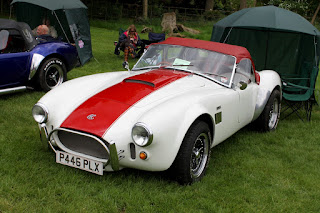I put the ignition barrel back in. Click the U clip down using a thin screw driver.
 |
| Push this clip DOWN until it clicks |
If the key is in the same position as it was when it came out it should click back in place. If it does not go in it could either be that the U shaped clip has not been pushed down fully or the key has moved a little in the barrel. The first issue needs the U clip pushing down until it clicks (Tip: use your phone camera to see this). If the clip is fully down then it could be that the key has moved. The key can be moved carefully anti clockwise (when viewed from the back) to the stop or clockwise, but whatever you do don't let the pin go as far as the hole at the end (look at the side opposite the key to see this)! The barrel should go fully home and click in to place.
At this stage the fuel pump was not connected to avoid any risk of starting up the engine by mistake. Not all the electrics can be tested yet e.g. engine related items cannot.
The results of the first test were:
- off, speed 1, speed 2
Hazard warning lights - all four indicators flash (should lights on wings flash too?)
Hazard warning dash light
Indicator warning lights - when hazards flash
Brake lights
Horn - initially sucked instead of blowing and produced a weasy noise. Swapped the wires around and oh boy what a noise!
Wipers - parking correct way, intermittent, speed 1, speed 2
Washers - water jet plus single wipe and park. Adjusted the aim of the jets
Rear reversing light - ignition key needs to be in fully turned position and reverse gear selected
Rear fog light - main lights need to be on - faulty switch, so this needs replacing (worked if jiggled), also I had connected the red/yellow wire by mistake (this is the reversing light wire)
Fog warning light on dash - but see above
Lights - side lights, dip, main beam
Number plate light - on with lights
Auxiliary output - on with ignition switch
Instruments (just the back lighting) - oil pressure, water temp, speedometer
Battery light - no alternator working
Brake fluid low warning - no fluid in reservoir
Not working
Instruments (just the back lighting) - fuel, voltmeter, tachometer
Lights - flash and door courtesy lights
Indicators - front, rear, side repeaters - off side front and rear work when the ignition is on, no matter what position the indicator stalk is in!
Checked the connections to the left column switch (indicators) and they are correct. Traced the wiring for the indicators in the loom and that looks okay too. The wiring to the instruments looks correct as well. So I am flummoxed.
Mark Turnbull suggested that I test the switch as this seems to be a likely cause. If this doesn't work, then it is time to call in the experts!
NOTE:
The earth connections to the instruments etc have been the main problem, so pay particular attention to these.















































